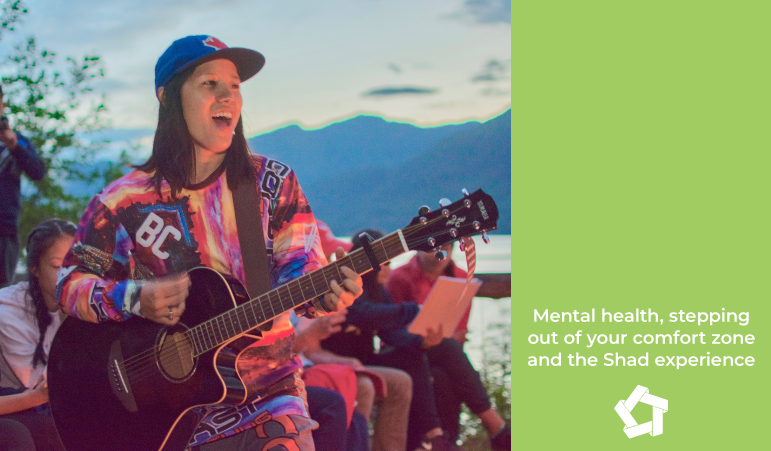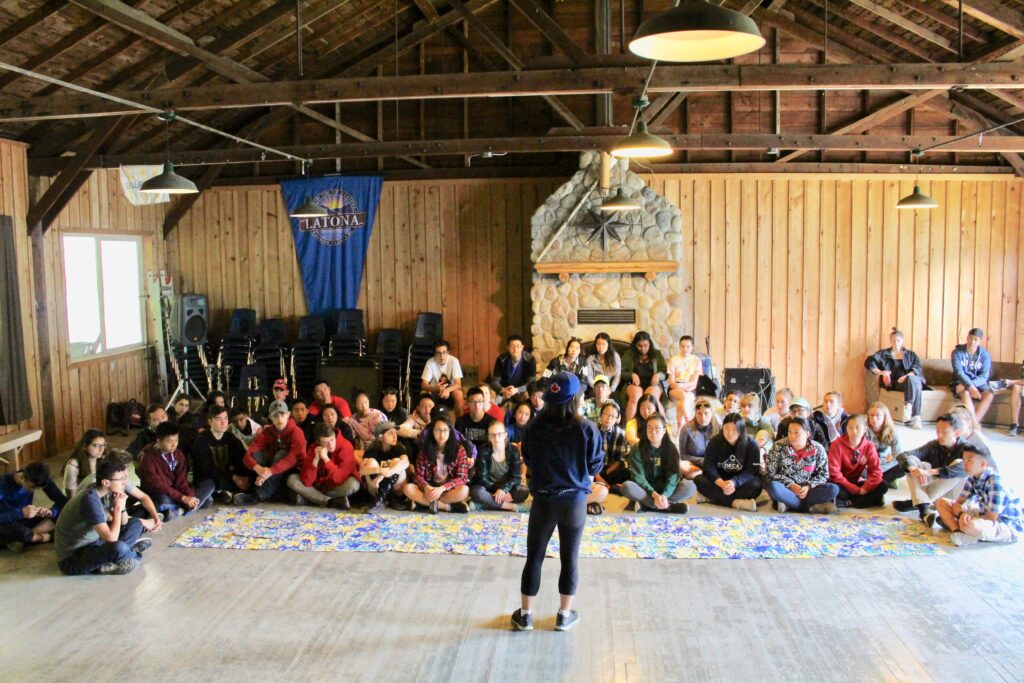
Mental health, stepping out of your comfort zone and the Shad experience
After two years of intermittent lockdowns, remote learning, restricted travel and just plain lack of human interaction, we are all feeling a little anxious about getting back to “in-person.”
We connected with Jess Tang, Program Director at Shad UBC, to get her thoughts on how the Shad community is structured to provide a safe space for students to reach personal breakthroughs and fuel their passion for STEAM & entrepreneurship; and is also poised to help youth find healthy baselines with supports for mental health after two years of pandemic living.
For over forty years, the Shad program has required students to step out of their comfort zones. Each year, 1,000 participants leave home, join a new Shad community, and live on a university campus with a selection of participants and program staff from across Canada. While on campus, students are exposed to post-secondary level academics, hands-on labs, STEAM activities and a signature design project that often includes building a plan, prototype and pitching an idea to a group of local business leaders.
This 27-day program is known for its high level of excitement, wonder, commitment and operating completely out of one’s comfort zone. Shad alumni call the overall Shad experience “transformative” when asked to describe it at the end of the program.

So how does Shad do it?
“We are very clear and intentional about how we create a community that has space for everyone and is as inclusive as we can get it,” says Jess Tang.
Community plays a very important role at Shad, because the program is immersive and students come to rely on each other, as well as on the program staff to acclimatize and get the most out of their experience. Shad is purposeful about creating a sense of connection and community.
During her 10-year tenure as a Shad UBC program director, Jess met hundreds of students. Shads are typically leaders in their communities, award winners, scholars, entrepreneurs, athletes that all have a common thread of wanting to give back to their community in some way. Each year Jess is genuinely impressed by the accomplishments and heart of the new participants. And yet, she expects that all participants shed those ‘titles’ during the program.
“…at Shad we don’t care about ‘titles’. We care about youth as humans. They don’t have to earn their spot at Shad. They already belong here,” explains Jess. “This gives them permission to shed parts of their old identities [such as an athletic captain, or robotics leader, or family caregiver], and allows space to explore what it means to be all that they are.”
This experience of shedding elements of one’s identity can be very liberating. Without the pressure of ‘titles’ and expectations, Shads are more willing to try new things, experiment and even fail.
“Many of our Shads are academic achievers…. They haven’t been given many opportunities [prior to Shad] to fail in a big way. …the Shad design challenge and other activities are almost unwinnable tasks. We know they are not going to get it right the first time. We give them an opportunity to experience speedbumps,” says Jess, who is also very adamant that this does not diminish their self-worth. “Risk taking and true growth go hand in hand. Youth can leave the program a lot more malleable and better able to face challenges in their future lives.”

Jess shares her mental health experiences
As the conversation turns to helping students ease their anxiety about entering a month long in-person program after doing most things virtually for the past two years, Jess draws from her own experiences dealing with difficult life situations.
“Getting back to a healthy baseline after a setback in my own life is influenced by how connected I feel to those around me. The community of those around me helps me build resilience.” Jess believes that communities offer a safe place to ask for help. She acknowledges that asking for help isn’t a weakness, it’s one of the bravest things we can do. “We can’t talk about mental health without talking about the importance of asking for help. Stigma comes from secrecy and silence. We are not meant to conquer mental health on our own, which makes community very important.”
Being in a supportive community, Jess believes it’s important to accept students as they are.
Drawing from her experiences Jess approaches mental health within the Shad community. “I think supporting mental health is being clear and intentional that ‘you belong here’ and creating a connection between the youth. I have learned in my life that we cannot minimize or diminish another’s pain, but I can give others a sense of connection and this is what helps us heal. We need to learn to understand that we are not meant to do this alone.”

Resuming in-person program in 2022
Some parents and students may still be wondering if it’s too early to get back to an in-person program. Jess doesn’t think it is.
“Waiting until they [youth] are able to build up resilience to face discomfort is not the right benchmark. Community building will always be a focus of our program, but after a prolonged period of isolation it will be even more important to make sure these Shads can flourish. There has been a lot of social anxiety built up. We have to re-learn how to connect with each other outside of a screen, outside of text messages.”
Jess’ plan for the program this summer is to give students just that – more time for Shads to get to know one another and to rebuild those social connections.
“We are going to give them more “play” and social time. I think this is something we are going to add more of, so it’s not just a lot of academic programming.” A full schedule is typical at Shad, participants are scheduled from 8:00 am to 10:00 pm. And this year, all campus program leaders will be taking youth mental health into account when considering program schedules and opportunities for connection, community and play.


